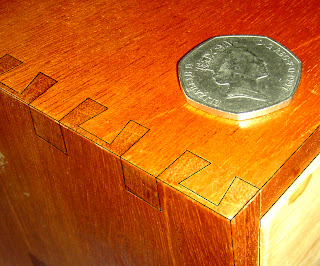The great thing about a blog is that you can say what you want without a magazine editor changing or messing up what you have written. The downside is that hardly anyone reads a blog unless you are a celeb.
Today's blog is about a true celeb in my life and that is my woodwork teacher. He more than anyone else has influenced my life - a true genius of a teacher and such is this man's modesty I could only find one Google result (below) about a Telegraph article about him riding a Royal Enfield Bullet in 2001. Curiously I owned one of those motorcycles as well as follow Howard in his footsteps and train at the legendary Shoreditch College as a Handicrafts teacher on leaving school. We were well ahead of the game teaching youngsters how to think creatively as well as use their hands. We were teaching design as an integrated part of Handicraft years before Design took over and eventually became embedded in Technology. The buzzword now is 'Making Things'. A bit late when the subject has been systemmatically dismantled over decades!
Howard Orme became woodwork master at Abbotsholme school as I entered the Lower Sixth form having failed Woodwork O level with the rest of the class under the previous uninspiring teacher who swiftly vanished. In the December resits I got 85% and two terms later Grade A at GCE A level (normally a two year course)! The thing about Howard, apart from him having a very glamourous young wife at this all boys' boarding school was that he was mildly eccentric and a damned good cabinetmaker as well as an inspiring teacher. Enthusiasm is what comes to mind and this certainly rubbed off, but he must have liked me and for someone who spent much of his school life in trouble that was quite something.
My father died when I was 17 and the headmaster gave me the day off lessons to be quiet and on my own. I took the day off fly fishing on the River Dove and feel no remorse in saying it was the first day of my freedom and so I guess Howard would have become a role model. He made learning woodwork fun and even gave me the keys to the woodwork shop one Friday night to make my first guitar. I worked throughout Friday and Saturday night and slumped over the bench around 4pm on the Sunday with one completed acoustic guitar. We had run out of French polish so I used shoe polish. It was an exciting moment of truth to string the guitar and it sounded good.
Above all Howard was a superb craftsman and he would invite me to his flat to inspect his cabinets while his lovely young wife made coffee! Howard had just left the RAF and I guess he was about 23 years old when he joined the Abbotsholme teaching staff.
On one occasion the headmaster brought some parents of a prospective new boy into the workshop. Howard and I were competing on mini crossbows we had made aiming at a poster of Edward Barnsley at the far end of the workshop. The headmaster was speechless but this was an independent progressive school and I was Howard's star pupil.
I dedicated one of my woodworking books to Howard Orme and later met up with him at Eton College where he took up a post in what he described as the Department of Maniacs (Mechanics). I don't think Howard ever really knew how much he had influenced me and not just in a selfish way of my becoming a renowned designer maker but more importantly to hand on the gift of education and in particular the undervalued Practical Arts that was my particular vehicle for personal development and expression. The greatest reward and one more lasting than the acclaim of (transient) fame as performer is when out of the blue ten, twenty or thirty years on an ex pupil or student appears out of nowhere and says you helped them find their direction in life. Especially in the field of teaching when at the time you have no real measure of whether you are any good at all.
However, one thing for sure is that anybody in the business of education - a teacher, has no business there unless they have not just enthusiasm but a passion for what they are teaching. A university degree proving you are clever is not enough.
Jeremy Broun with teacher Howard Orme at Abbotsholme School
Howard Orme and Jeremy Broun at Eton College where Howard taught
Howard Orme's Telegraph article:
http://www.telegraph.co.uk/motoring/4753067/Typical-biker-Howard-Orme.html











